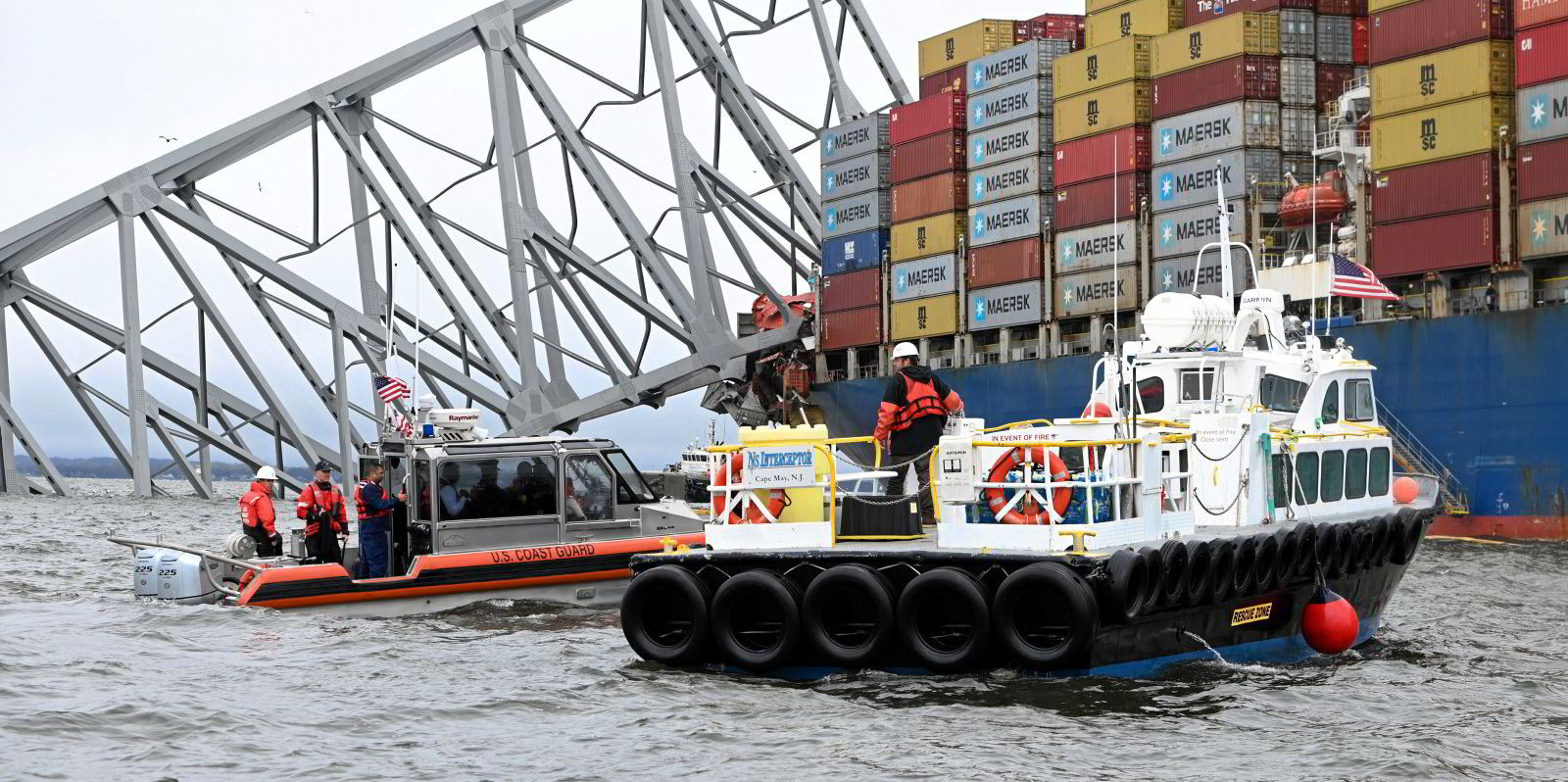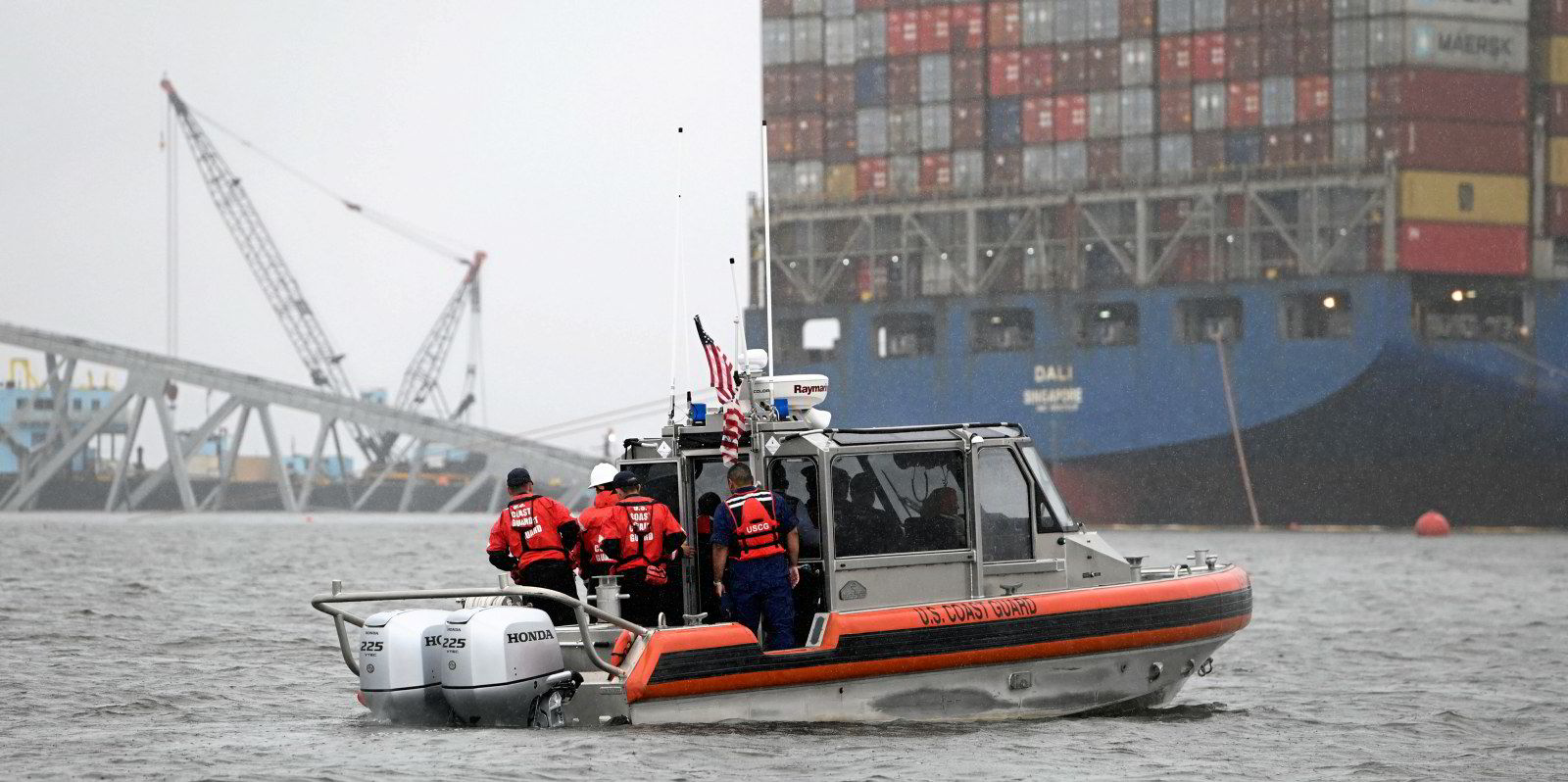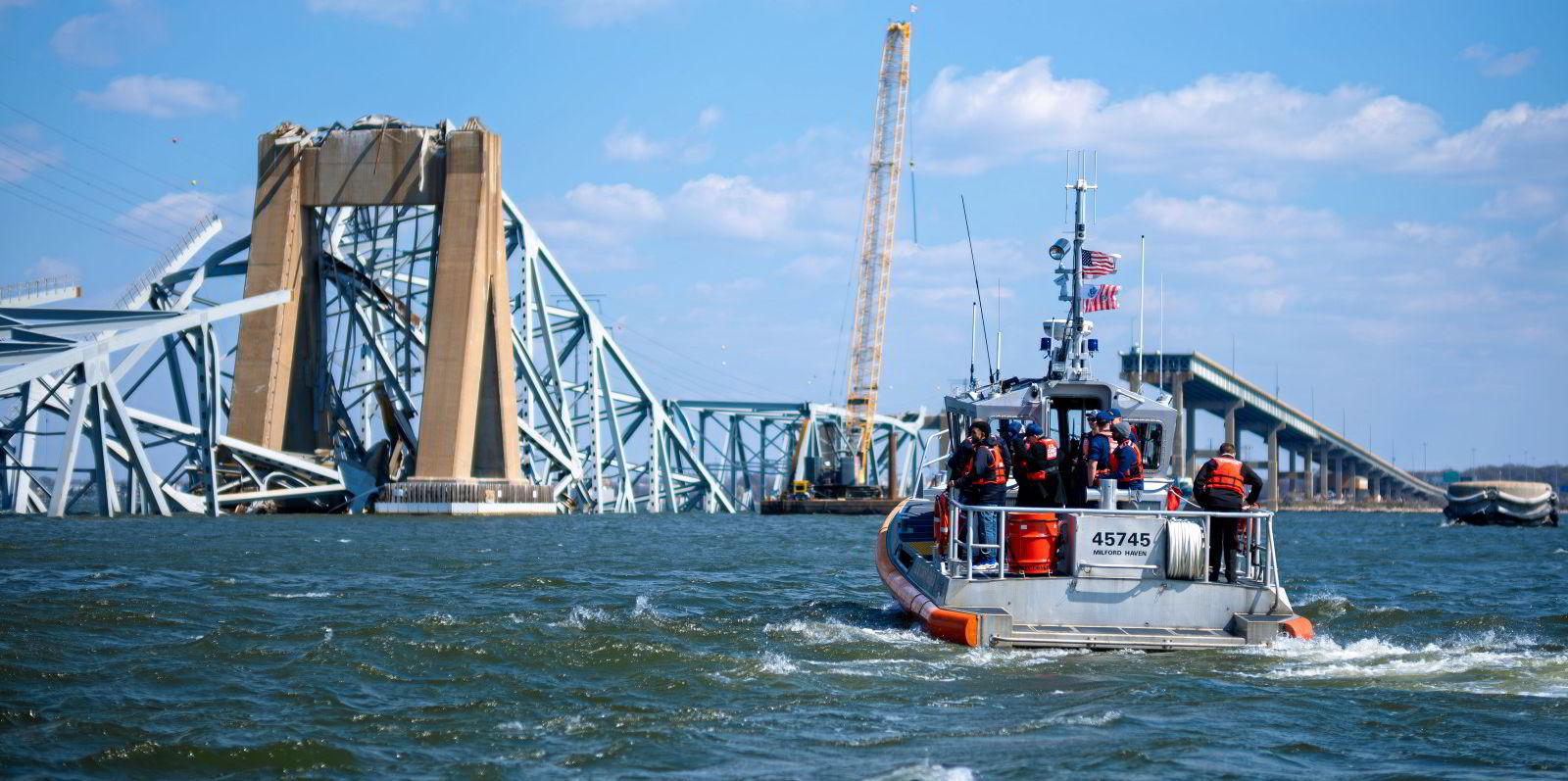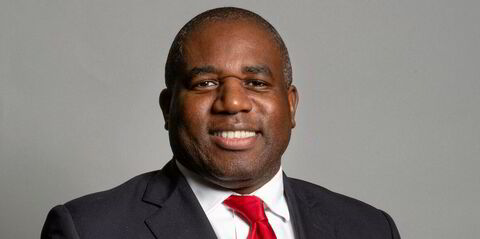Efforts to inspect the ground Dali and ultimately clear bridge wreckage from the shipping channel connecting Baltimore to the Atlantic continue to face challenges, as rough weather and murky water impede progress.
Meanwhile, operators and shippers are taking measures to divert containerised and vehicle cargoes as the shut-in port of Baltimore prepares to be cut off from the Atlantic for the long haul.
In a media briefing, Maryland governor Wes Moore described murky conditions in the water of the Patapsco River, where the Francis Scott Key Bridge collapsed into a busy shipping channel after it was hit by the 9,962-teu container ship Dali (built 2015).

“The collapse of the bridge is so distinct and so severe, with the metal that is so dis-configured and so brought-together and pancaked, that it continues to make this mission extraordinarily complicated and dangerous for those who are conducting it,” the governor said.
Video footage revealed the challenging conditions faced by salvage divers in the river, with officials describing visibility ranging from 30 to 60 centimetres, akin to navigating through a snowstorm with high beams on.
US Navy-contracted divers worked on Thursday to inspect the Dali to assess damage to the Grace Ocean-owned, AP Moller-Maersk-chartered container ship and pinpoint locations where it is grounded.
A day earlier, efforts were hampered by thunderstorms and high winds.
Maryland State Police are standing by to assist with recovery operations “when it is safe” to move forward, a unified command of agencies responding to the disaster said.
Authorities have opened a second temporary channel around the bridge wreckage, but its depth is limited to 4.3 metres, still not deep enough for deep-draught shipping traffic.
“Our number one priority remains reopening that shipping channel,” US Coast Guard rear admiral Shannon Gilreath said at the media briefing. He noted that the second priority is removing cargo from the bow of the Dali.
Moore, who has led daily updates on the incident, put focus on ensuring activity continues at the port, highlighting that 75 containers on a ship diverted to New York were offloaded at the Seagirt Marine Terminal after being moved by rail.
“This is not a permanent solution. The 75 containers that we moved today represent less than 5% of the average number of containers that the port processes daily before the collapse,” he said. “We still have a long road ahead of us to getting vessel traffic back up to full capacity, but we will get it back up to full capacity.”
Andy Yeoman, chief executive of digital insurance platform Concirrus, told TradeWinds that there were some 10,000 containers gated at the port for outbound shipment at the time of the incident, which represents a supply chain headache for auto parts and paper product recycling exports making up a major share.

There was an estimated 100,000 teu of cargo booked to land at the port of Baltimore, he said.
“This means they’ll now either be stuck in transit or diverted via alternative routes — again causing protracted headaches and knock-on effects to manufacturers, retailers and consumers,” Yeoman said in a LinkedIn post.
A picture is beginning to emerge of those diversions.
Chris Rogers, head of supply chain research at S&P Global Market Intelligence, said on Thursday that container lines AP Moller-Maersk and MSC Mediterranean Shipping Company, which make up 53% of Baltimore imports, are rerouting ships and are major users of Philadelphia, Norfolk and Newark.
But the impact on peak season containerised imports may be minimal.
“While the peak season from July onward may prove more challenging, seasonal goods only represented 6% of Baltimore’s imports,” he said.
S&P said Zim may need to route to Philadelphia and Norfolk, while Evergreen Marine and Atlantic Container Line may have to choose Norfolk and New York.

In the car carrier sector, Baltimore has a vehicle terminal at Sparrows Point that is not blocked by the bridge collapse.
TradePoint Atlantic, which operates the terminal, said it will receive six regularly scheduled vessels and nine redirected vessels over the next two weeks.
“Automotive supply chains may face more of a challenge, with only the Sparrows Point terminal remaining open and expected to handle 10,000 vehicles in the next two weeks compared with normal total monthly imports for Baltimore of 60,000 to 70,000 vehicles,” Rogers said.
“Most of the major users of Baltimore use alternative ports much further south.”




